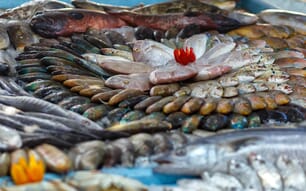The AFMA Commission approved the sustainable catch limit increase of 2000 tonnes at its meeting in Port Lincoln this week. This is the fourth season in a row where the aggregate catch limits have sustainably increased in this major fishery.
Senator Richard Colbeck, Parliamentary Secretary to the Minister for Agriculture, attended the meeting and said the increased science-based catch limit was good news for fish lovers across Australia.
“Commonwealth fisheries are internationally recognised as some of the most sustainable and best managed in the world,” Senator Colbeck said.
“The news today that the total amount of allowed commercial catch in the SESSF will be eight per cent higher than the previous season just goes to show that the strong management led by Australian Fisheries Management Authority is paying dividends.”
“Much of the increase was for the popular blue grenadier (or hoki), reflecting the ongoing healthy status of the stock.”
“Importantly, consumers can have confidence when eating one of the many species commercial fished in the SESSF like blue grenadier, flathead, gummy shark or whiting that it is from a sustainable, well managed fishery.”
“The health of Australian fisheries is further supported with the latest ABARES Fishery status report, which shows that for the first time in many years, no solely managed Commonwealth fishery is subject to overfishing.”
The Chair of the AFMA Commission, the Hon Norman Moore, said AFMA’s use of the best available science and strict management regulations means Australians can have confidence that Commonwealth fisheries will remain sustainable both now and well into the future.
“Our catch limits for commercially caught species are set conservatively, using up-to-date independent research. This ensures that current and generations will have a healthy supply of Australian seafood,” Mr Moore said.
“When setting our catch limits for each season, the AFMA Commission carefully considers the views of leading fisheries scientists as well as the fishing industry, conservation groups and recreational fishers.”
This week’s meeting was the first of the AFMA Commission for the year. The Commission meets in major ports for Commonwealth fisheries to ensure good stakeholder engagement and hear firsthand issues from the Australian industry.



